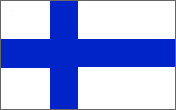| French | English | |
|
| | du | of the | | de l' | of the | | de la | of the | | des | of the | | au | to the / at the | | à l' | to the / at the | | à la | to the / at the | | aux | to the / at the |
French has multiple options because it has 2 genders for nouns "the chair" = "la chaise" (female), "the bench" = "le banc" (male), and it changes the article when you're talking about multiple things vs. single things "the benches" = "les bancs".
So, French really has 3 versions of "the": "le" (male, singular), "la" (female, singular), "les" (female or male, singular).
But German... ugh. There's a 4x4 matrix of German words for "the". German had the wisdom to come up with a neuter gender, but the insanity to not apply it to most common objects. Somehow a knife is sexless, a spoon is male and a fork is female. Making it worse, the version of "the" you use for an object depends on whether the object is the subject of a sentence, the object of a sentence, the indirect object of a sentence or possessive. I don't know if it's better or worse (but I'm leaning towards worse) that they re-use a lot of these articles at other spots in the matrix, so "der" is used for male objects in the nominative case, female in the dative case, and plural objects in the genitive case.
| Case | Masculine | Feminine | Neuter | Plural | |
|
|
|
|
| | nominative | der | die | das | die | | accusative | den | die | das | die | | dative | dem | der | dem | den | | genitive | des | der | des | der |
Take "Stein" which is stone, not beer glass. If you're an English speaker and are used to adding an "s" to make something plural, and you see "Der Stein" and "Des Steines", you might think that the version with the "es" is the plural, right? Nope, the plural of "Der Stein" is "Die Steine". "Des Steins" is for the possessive case. You'd use "Der Stein" for "The stone is heavy", but if you want to say "The weight of the stone is high" you have to switch to "Des Steins" -- and to add another twist, sometimes it's "Steines" because of reasons.



